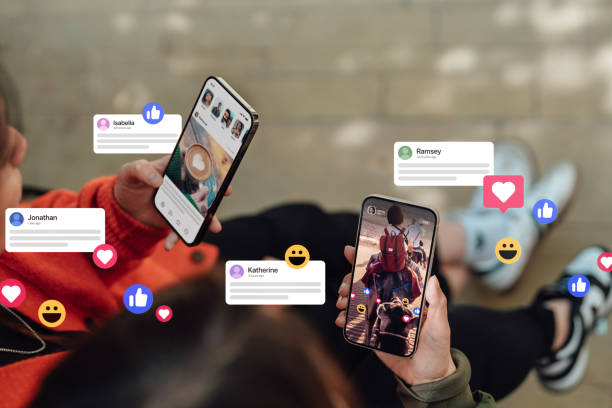Different platforms come with different rules, and processes. Well, unspoken rules, that is. To appeal to your audience on that platform, it’s important you get it right. Ensure you’re able to adapt.
In today’s digital landscape, content creation is more complex than ever. With various social media platforms each having unique features and audiences, it’s essential for content creators to tailor their approach for each platform to maximize engagement and reach. Here’s a comprehensive guide on how to create content tailored for different platforms.
1. Understanding platform specifics
Each social media platform has its unique characteristics, user base, and content preferences. Understanding these nuances is the first step in tailoring your content effectively.
- Audience: Diverse, but generally older than other platforms.
- Content type: Mix of text, images, videos, and links.
- Best practices:
- Use high-quality images and videos.
- Write engaging, longer-form posts.
- Utilise Facebook Groups for community building.
- Leverage Facebook Live for real-time engagement.
- Audience: Younger demographic, highly visual.
- Content type: Images, short videos, Stories, Reels.
- Best practices:
- Use high-quality, aesthetically pleasing images.
- Engage with Stories and Reels for more reach.
- Use hashtags strategically.
- Maintain a consistent visual theme or style.
- Audience: News-driven, younger demographic, professionals.
- Content type: Short text posts, images, videos, threads.
- Best practices:
- Keep posts concise (within 280 characters).
- Use hashtags to join trending conversations.
- Engage with followers through replies and retweets.
- Use Twitter threads for more in-depth content.
- Audience: Professionals, B2B focus.
- Content type: Articles, professional updates, company news.
- Best practices:
- Share industry insights and professional achievements.
- Post long-form articles.
- Engage with professional groups.
- Maintain a professional tone.
TikTok
- Audience: Very young demographic, highly engaged.
- Content type: Short, creative, and entertaining videos.
- Best practices:
- Create fun and engaging short videos.
- Use popular sounds and trends.
- Engage with challenges and hashtags.
- Be authentic and spontaneous.
YouTube
- Audience: Wide-ranging, depending on content.
- Content type: Long-form videos, vlogs, tutorials, reviews.
- Best practices:
- Create high-quality, informative, and entertaining videos.
- Optimise titles, descriptions, and tags for SEO.
- Use engaging thumbnails.
- Engage with viewers through comments and community posts.
2. Tailoring content
Once you understand the specifics of each platform, it’s time to tailor your content. Here are some strategies to help you do that:
Adjust your message
- Platform tone: Match the tone and style of your content to the platform’s typical user interaction. For example, keep it professional on LinkedIn but more casual and playful on Instagram or TikTok.
- Content length: Adapt the length of your content. Twitter requires brevity, while YouTube allows for longer, more detailed videos.
Optimise visuals
- Image and video dimensions: Each platform has preferred dimensions for images and videos. Ensure your content fits these specifications to avoid awkward cropping or poor display.
- Aesthetic consistency: Maintain a consistent visual theme on platforms like Instagram, where the overall aesthetic of your profile can impact follower engagement.
Engage with platform features
- Native tools: Use the platform’s native tools and features, such as Instagram Stories, Twitter polls, or Facebook Live, to enhance engagement and visibility.
- Interactive content: Engage users with interactive content like polls, Q&A sessions, and live videos.
3. Scheduling and consistency
Consistency is key in content creation. Develop a content calendar tailored to each platform’s peak times and user behaviour.
Peak posting times
- Research: Investigate when your target audience is most active on each platform.
- Scheduling tools: Use scheduling tools like Hootsuite or Buffer to plan and automate your posts for optimal times.
Consistent posting
- Regular Updates: Maintain a regular posting schedule to keep your audience engaged.
- Adapt Frequency: Tailor the frequency of your posts to the platform. For example, posting multiple times a day on Twitter is acceptable, while once a day might be better for Instagram.
4. Analysing performance
Regularly analyse the performance of your content on each platform to understand what works and what doesn’t.
Metrics to track
- Engagement rates: Likes, shares, comments, and other interactions.
- Reach and impressions: How many people see your content.
- Conversion rates: Click-through rates and actions taken as a result of your content.
Tools for analysis
- Platform analytics: Use built-in analytics tools like Facebook Insights, Instagram Analytics, and YouTube Studio.
- Third-party tools: Consider tools like Google Analytics, Hootsuite, or Sprout Social for more detailed insights.
Adjusting strategy
- Iterate: Use data to refine and adjust your content strategy.
- Experiment: Continuously experiment with different types of content and posting times to see what yields the best results.
Creating content for different platforms requires understanding their unique features and tailoring your approach accordingly. By adjusting your message, optimising visuals, engaging with platform-specific tools, maintaining a consistent posting schedule, and analysing performance, you can maximize your reach and engagement across all social media channels.







